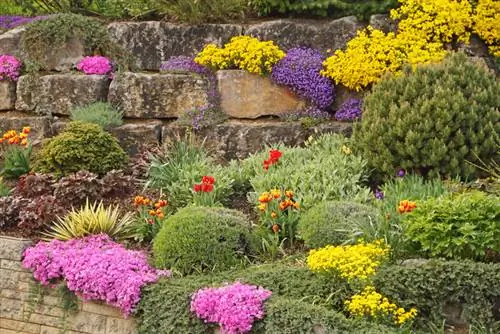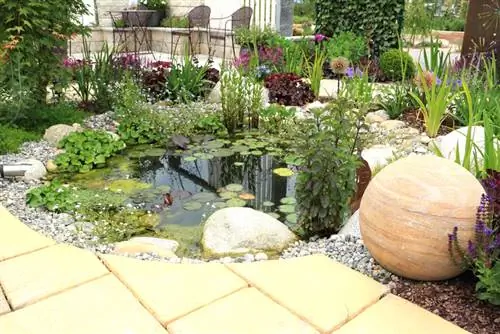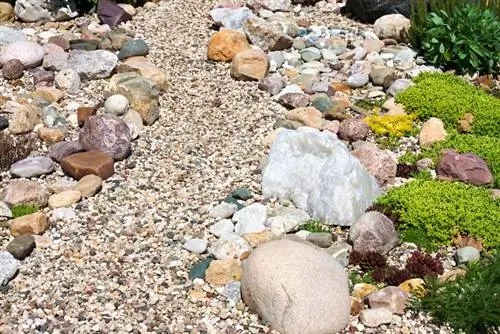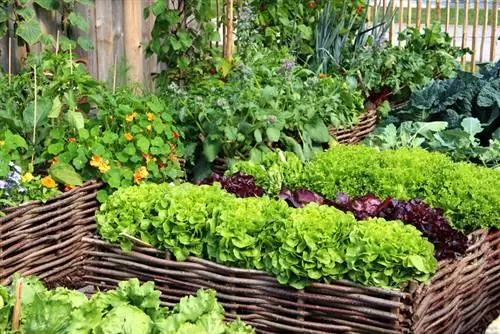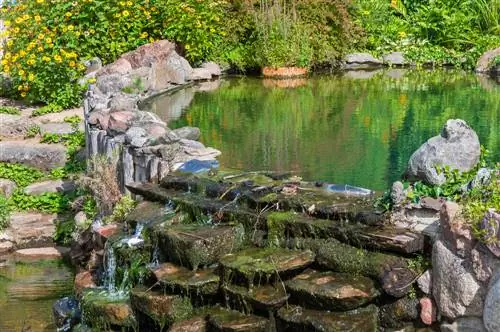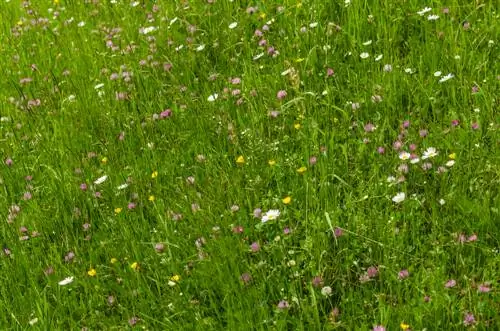- Author admin [email protected].
- Public 2023-12-16 16:46.
- Last modified 2025-01-23 11:21.
There are countless ways to design and create a rock garden. However, before you start concrete planning, you should first think about not only the style you want, but also the local conditions and the planned maintenance effort. After all, not all plants can be planted in every location - some prefer a dry and sunny place, others a rather damp or even a shady one - and the time required for care later also plays a role in the design.
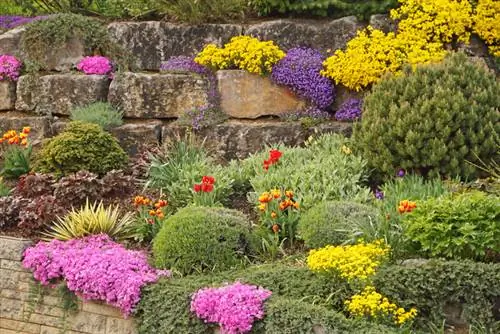
How can I make a rock garden attractive?
To design a rock garden, rely on a natural look through different types and sizes of rock, suitable plants and possibly water or slope elements. Mini rock gardens can be created in suitable containers on balconies or terraces.
What should the rock garden look like?
The selection of plants and the specific design of the rock garden determine the amount of care required. If you don't have much time or don't want to put in too much effort, it's better to limit yourself to a smaller "mountain", possibly with the option of expanding it later. Maintaining a larger stone system can be very time-consuming. The choice of plants also determines the amount of care required, because robust and fast-growing cushion plants require less care than more complicated, dwarf species.
The natural rock garden
The best source of ideas for your “garden mountains” is nature itself. With appropriate planning, natural rocky landscapes can also be recreated in the garden, for which you need different types of stone in different sizes. With different types of rock, you can create suitable habitats for many mountain plants, because not every plant thrives on every rock. There are a whole range of calcareous plants that would sooner or later survive on limestone rocks such as shell limestone, dolomite or tuff, as well as plants that absolutely need lime for he althy growth and therefore cannot find an ideal habitat on silicate rocks such as granite or slate. But it's not just the choice of rock type, but also the pleasing distribution of different stone sizes from boulders to gravel to fine chippings that gives the complex a natural impression.
Variations of the natural rock garden
There are numerous variants for rock gardens designed to look true to nature. The combination of water - for example in the form of a stream and / or small pond - and stone or a rock garden on a slope or embankment is particularly nice to look at. Such conditions can also be created artificially as so-called sunken gardens with the help of dry stone walls. A special form of the naturally designed rock garden is also the fascinating Japanese Garden.
Mini rock garden for balcony or terrace
You don't necessarily need a large garden to create a lifelike rock garden, as a mini mountain landscape can also be created on the balcony or terrace using suitable planters. Examples of suitable vessels are
- (disused) stone feeding troughs
- frost-proof bowls and coasters made of clay
- Wooden boxes and barrels
- conventional (frost-proof!) balcony boxes
- (self-made) vessels made of sandstone or cement etc.
With these mini rock gardens, pay particular attention to good drainage, as waterlogging and too much moisture quickly lead to the death of the plants.
Tip
If you own a house or an outbuilding with an easily accessible flat roof, then it is even possible to create a rock garden there. However, you should first clarify the load capacity of the construction. After all, the stones add a lot of weight to the roof.

